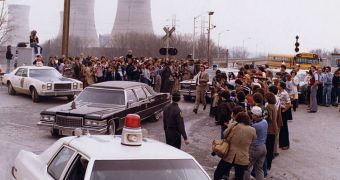Yesterday, February 9, authorities in the United States gave the go-ahead for the construction of two new nuclear reactors in the state of Georgia. This is the first time the building of nuclear reactors is authorized in the United States, since the Three Mile Island nuclear accident three decades ago.
North America is lagging behind in implementing safer nuclear reactor types and technologies. China is already leading the way, with new-generation reactors already installed and producing electricity at full capacity. The two new American reactors will be state-of-the-art as well.
Experts say that third-generation reactors have longer-lasting batteries, can operated on passive cooling systems (such as those powered by gravity), can survive far longer during emergencies, and are safer overall than any other design.
The reactors will be built at an existing installation, in Vogtle, Georgia. The US Nuclear Regulatory Commission passed the decision with a 4-1 vote, LiveScience reports. Officials remind that the last instance when this happened was in 1978.
“We think it's a very significant step going forward. It is the first of the new generation,” says Idaho National Laboratory (INL) nuclear science and technology directorate manager Harold McFarlane.
Back in 1979, the core of reactor 2 at the Three Mile Island nuclear power plant experienced a partial meltdown, which led to the release of fissionable material in the environment. Though nowhere nearly as serious as the Chernobyl accident, the event did prompt the US to stop building nuclear facilities.
As such, none of the 104 nuclear power plants in the US today is based on modern technologies. In fact, most of them are based on construction methods and materials that existed in the early 1960s and 1970s. However, since the 1990s, new technologies and reactor types have appeared and developed.
The two new reactors will be built by Westinghouse, which already has experience in setting up third-generation facilities after working extensively with China on such applications. Right now, the NRC is reviewing 12 combined license applications for new reactors.
One of the most impressive safety features for this type of reactors is that “the water needed to cool the reactors is stored inside the containment building rather than outside of containment,” INL risk analyst Robert Buell explains.
“You use physics and natural circulation along the containment walls to cool the reactors instead of relying on mechanical systems,” he concludes. The NRC says that about 5 new reactors are expected to come online by 2020.

 14 DAY TRIAL //
14 DAY TRIAL //